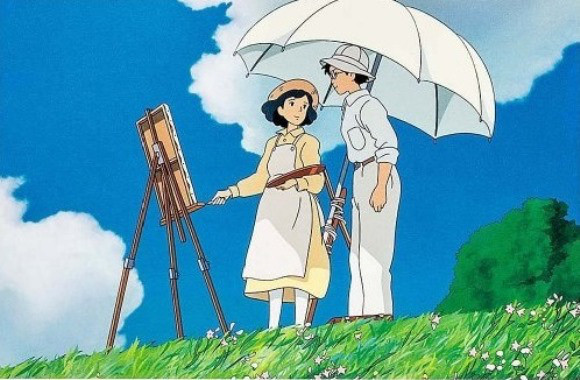In the late afternoon on a chilly March day, I meet the French actress Géraldine Pailhas in the lobby of a New York hotel, almost hidden among the sidewalks. We are there to talk about Pailhas’s newest film, showing as part of Rondez Vous With French Cinema, Francois Ozon’s impressive new film, Young And Beautiful, a film which eludes simple summary. It’s about prostitution, sure. Seemingly, the subject is a girl selling herself in the pursuit of cash. The girl asks for five hundred dollars from her johns, the same amount which her absent father sends her for birthdays. Her mother (played by Pailhas) is distant as well, conducting affairs and remembering her wild younger days. Slowly, things dissolve. Ozon makes a careful, lovely film which shows nuance and surprising tenderness in a story which would seem ripe for exploitation. As well, the film features some of the best and most precise use of music in any film this year with a careful selection of four songs by Francoise Hardy. The interview with Pailhas provided my favorite kind of exchange, the chance to discuss and explore the process behind a fascinating film as well as to hear about Pailhas’s career in the French film world.
The Story
Gabriel Chazan: I wanted to start by asking how much you thought the story of the film was particular to the French context or was a general story…
Géraldine Pailhas: I was wondering what story exactly to you?
GC: Yeah, there are so many stories [in the film] and I want to talk about that. I saw it as an entirely different story than what I’d expected…
GP: Because some people are focusing on the prostitution of this young girl. This to be the first subject, the one which attracts people or also repulses people. But to me, it’s probably a more like a pretext to talk about adolescence and about this very, very tense moment of everybody’s life where you can feel mutation in your body, in your mind, in your emotions and that you don’t fit. To what, to where, to whom? I don’t know. Anybody can experience his own suffering in that moment, more or less because some people go through that pretty easily. It’s later that something happens. But for me, the movie is more wide than just the idea of this young girl being a prostitute. So it’s also less French than we could think also because it’s about every single adolescence.
GC: The way I saw the film, it was mostly about family. Because in my viewing the two figures, the man and his wife, who she meets through prostitution are very reflective of the mother figure and the father figure who are in some ways absent, the father living in Italy and the mother distant. I was curious, playing the mother, how you regarded that and how you saw the film as being about family.
GP: I think what you just said is very interesting, about those two characters that just are added to the original family. Of course, they also can also represent the most important person as the mother and the dad. The mother as the one who finally understands her daughter and she’s Charlotte [Rampling] and the dad who can love his daughter and be close to her and take care of her and… But this is more dangerous to go that way. [laughs] I think you can add sex everywhere and you can also take it out of every situation. I mean, that’s quite sad, eh? You can find sex everywhere. For me, the story can be many things. It can also be a chess board. It can also be a horror movie…
GC: Yeah, the first shot is this shadow looming over this young girl…
GP: Yeah, he, Francois, succeeds to create a very open film with tensions and nothing is shown precisely or told or explained. That’s probably what is a problem for a few audience spectators. Those people need to be taken by hand which I understand completely but this movie would not do that for them. It’s something about empathy, I think and there is a lot of space for empathy in this movie because you can decide to whom you want to feel empathy or not, who is going to stay mysterious to the end… I think I have the answer for that. [laughs]
Of course, the center is family. Because in family, there is love but there is also death. You can completely crush your kids if you give them too much of something. Too much love or too much indifference. But it’s the center of all the abuses and too much love is one of them.
The Mother
GC: I was curious how in playing the mother you saw her in relation to the daughter. She often talks about how she was wild in her youth and I was wondering if you saw the daughter as trying to re-stage that… How did you regard the mother? How did you find compassion for the mother?
GP: I was kind of mad at her so I had to get rid of that feeling because it’s exactly the same thing, the same reaction that the character has toward her daughter. She is mad at her daughter because the daughter has everything she needs, that she thinks she needs. I was mad at the character because she also has everything she needs: the husband, the beautiful kids, the nice neighborhood, the money also and I was thinking that she was not curious enough to not only accept what she has got but also to go further and to investigate. Just to be able to know who she is living with and not only think that she is the maitresse where everybody is trapped. So I was mad at her because of that, because she has the opportunity of working on herself and…
GC: …and chooses not to, yeah.
GP: Then I tried to understand her and I did, I think. I wanted to give life to her so it was very important to have empathy and she touched me. Because she’s lost, she’s so wrong and…that’s humanity. That’s all about humanity, I think. She thought she was sweet. She thought she was tender and gentle. She thought she was perfect and there’s nothing about perfection in humanity [laughs] so she was not human. In this story, her daughter is, in a way, teaching her humanity by hurting her that much.
GC: I appreciated that so much in the film. That empathy is really strong for viewers and I think that was what surprised me in the film so much…
GP: Why?
GC: It felt so affirming in the end and it felt like it was moving toward tenderness by the end, very slowly but I thought that was a really impressive and surprising shift for me…
GP: At the same time, nothing is ending…
GC: Nothing is perfected…
GP: And satisfying because she will never be that gentle girl that the mother wants her to be. I mean, some day she will probably meet someone whom she really loves. You can kind of hope that for her. At the same time, why? There’s many ways to find a life, get a life and I hate the idea that there is only one model and that’s the mother’s one which is not perfect.
GC: Yeah, I saw it as the daughter going against the mother’s model [of how to be]. I thought that’s a really complicated friction that happens in the film. The daughter in a sense fulfills what the mother laid out for her, to just be a wild young woman. But her expectation is so exceeded by the daughter’s rebelliousness. I just found that really fascinating…
Ozon’s Methods
GC: It’s such a careful movie. Every shot was so mapped out, so tight. I was interested in how long the set ups took and just how the shoot was?
GP: Do you know that Francois does the frame himself?
GC: Oh yeah?
GP: Yeah, he shoots the film.
GC: That makes a lot of sense. It’s so precise.
GP: I very often forget to tell people that because very few people know, actually. It’s very special for an actress or actor to be confronted. The first look of the camera, the director is behind.
GC: That must give so much intimacy to the shoot.
GP: Yes. I think everything is more immediate and obvious also. You can correct things even more easily. He’s good. I mean, I love the way he films.
GC: You’ve shot with him before [Young And Beautiful]
GP: Yes, I have. On the set because he is the driver in two ways, it goes really fast. And he’s a very faithful director so he knows his crew very well. He changes from time to time but mostly it’s people who he’s been working with most of the time.
GC: So it’s a shorthand.
GP: Yeah, where there’s obstacles, with him it’s always about the solution first which means that we finished two days in advance. [laughs]
GC: That’s a rare thing to hear.
GP: Yes, it’s the opposite almost of every other project and I really, deeply understand why it’s so difficult somewhere else with somebody else. But it’s also kind of a miracle to see Francois being that human and that efficient. He has the biggest capacity of work that I’ve ever seen and some jealous people could say that he doesn’t work enough just to explain why he’s so great compared to them. But that’s not true. He’s a hard worker and I admire him. All the people who work with him admire him and love him. He’s a very lovable person.
Pailhas’s Carreer
GC: I was interested if you could talk a little bit about your experience of acting in the French film world.
GP: I’m an actress because I love cinema, because I love directors and I want to be their favorite actress. I want to be the one who can get through the idea they’re trying to sell and I want to be the voice, the body of the directors. That’s most of the time what I want to be and to do. I’m really lucky because the directors I’ve been working with trust me, most of the time entirely and I respect them and so there is an exchange of respect and intelligence I guess and I can go really far.
GC: What films inspired you to be an actress?
GP: Do you know Maurice Pialat?
GC: Yeah.
GP: I was a dancer. I wanted to be a classical dancer, ballet, but I was fascinated by a few movies and by a few directors. This one was particularly touching to me as a man before I even knew his movies. Then I started to watch his movies and I was thinking that if I may be an actress someday, which I didn’t want to [laughs], I would love to play a role in one of his movies. Then I became an actress and I made his last movie in 1995 and it was extraordinary.
GC: How did training in ballet influence you as an actress?
GP: It makes you quicker, every move on the set is something that I don’t have to think of. It’s very natural and I don’t feel lost. I don’t have to look for my place. I’m free with my whole body.
Young And Beautiful will be released April 25th in New York
[This interview has been condensed and edited.]

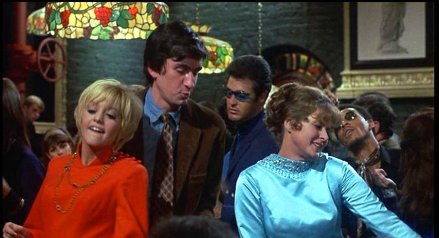
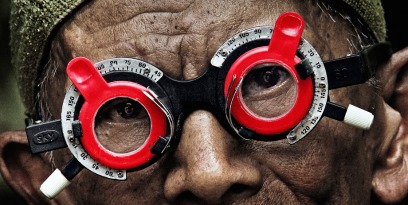

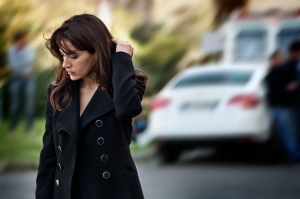 onalistic docudrama however. He places several stories alongside the TV screens blaring out coverage. In one segment, an actress (played by a wonderfully melodramatic Isabelle Huppert) performs the role of the cloistered nun as she cares for her daughter kept alive by a tube pumping air for an audience of mirrors. Her son fights to get her to return to the stage. Meanwhile, a senator (Toni Servillo of The Great Beauty) tries to decide how to vote on Eluana’s case which brings ghosts of his past. At the same time, his distant daughter Maria (a lovely Alba Rohrwacher) marches for Eluana to be kept alive and falls in love with a man who protests against it. A doctor watches, obsessively, the body of a suicidal drug addict who is in a coma and wishes no longer to be alive. Bellochio shows all the meanings that this real event could have for these different people, all of the implications that it brings. This news story becomes the driving force between a network of stilled relationships, between lovers, mothers and sons and fathers and daughters. This is a story not just of one sleeping beauty but several, all waiting to awaken…or go forever to sleep.
onalistic docudrama however. He places several stories alongside the TV screens blaring out coverage. In one segment, an actress (played by a wonderfully melodramatic Isabelle Huppert) performs the role of the cloistered nun as she cares for her daughter kept alive by a tube pumping air for an audience of mirrors. Her son fights to get her to return to the stage. Meanwhile, a senator (Toni Servillo of The Great Beauty) tries to decide how to vote on Eluana’s case which brings ghosts of his past. At the same time, his distant daughter Maria (a lovely Alba Rohrwacher) marches for Eluana to be kept alive and falls in love with a man who protests against it. A doctor watches, obsessively, the body of a suicidal drug addict who is in a coma and wishes no longer to be alive. Bellochio shows all the meanings that this real event could have for these different people, all of the implications that it brings. This news story becomes the driving force between a network of stilled relationships, between lovers, mothers and sons and fathers and daughters. This is a story not just of one sleeping beauty but several, all waiting to awaken…or go forever to sleep.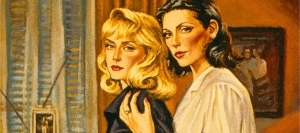
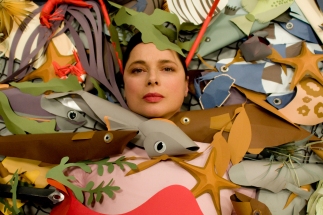 nt of viewing the different processes of animal reproduction from Rossellini’s deeply human and performative interpretation is the way it makes the viewer consider his or her own sexuality and place in the world. The beauty and humanity in looking at the different mating habits explored by Rossellini comes in seeing every human desire realized in some animal process: Rossellini described her father’s desire to become pregnant, impossible in human men, realized in several animals; Rossellini professed her own relation to salmon, who are able to protect themselves against unwanted mates through creating a labyrinth.
nt of viewing the different processes of animal reproduction from Rossellini’s deeply human and performative interpretation is the way it makes the viewer consider his or her own sexuality and place in the world. The beauty and humanity in looking at the different mating habits explored by Rossellini comes in seeing every human desire realized in some animal process: Rossellini described her father’s desire to become pregnant, impossible in human men, realized in several animals; Rossellini professed her own relation to salmon, who are able to protect themselves against unwanted mates through creating a labyrinth.